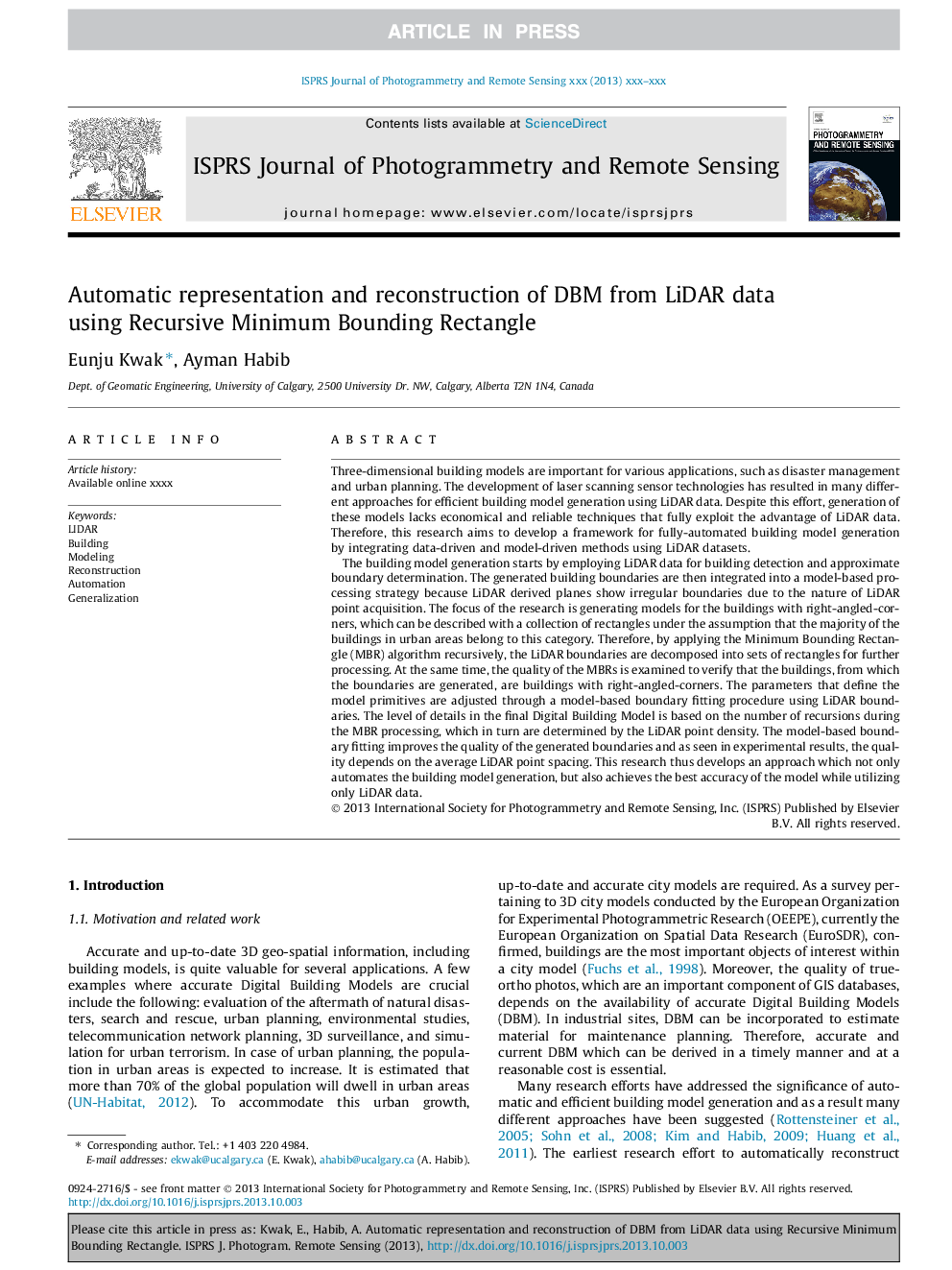| Article ID | Journal | Published Year | Pages | File Type |
|---|---|---|---|---|
| 6949663 | ISPRS Journal of Photogrammetry and Remote Sensing | 2014 | 21 Pages |
Abstract
The building model generation starts by employing LiDAR data for building detection and approximate boundary determination. The generated building boundaries are then integrated into a model-based processing strategy because LiDAR derived planes show irregular boundaries due to the nature of LiDAR point acquisition. The focus of the research is generating models for the buildings with right-angled-corners, which can be described with a collection of rectangles under the assumption that the majority of the buildings in urban areas belong to this category. Therefore, by applying the Minimum Bounding Rectangle (MBR) algorithm recursively, the LiDAR boundaries are decomposed into sets of rectangles for further processing. At the same time, the quality of the MBRs is examined to verify that the buildings, from which the boundaries are generated, are buildings with right-angled-corners. The parameters that define the model primitives are adjusted through a model-based boundary fitting procedure using LiDAR boundaries. The level of details in the final Digital Building Model is based on the number of recursions during the MBR processing, which in turn are determined by the LiDAR point density. The model-based boundary fitting improves the quality of the generated boundaries and as seen in experimental results, the quality depends on the average LiDAR point spacing. This research thus develops an approach which not only automates the building model generation, but also achieves the best accuracy of the model while utilizing only LiDAR data.
Related Topics
Physical Sciences and Engineering
Computer Science
Information Systems
Authors
Eunju Kwak, Ayman Habib,
